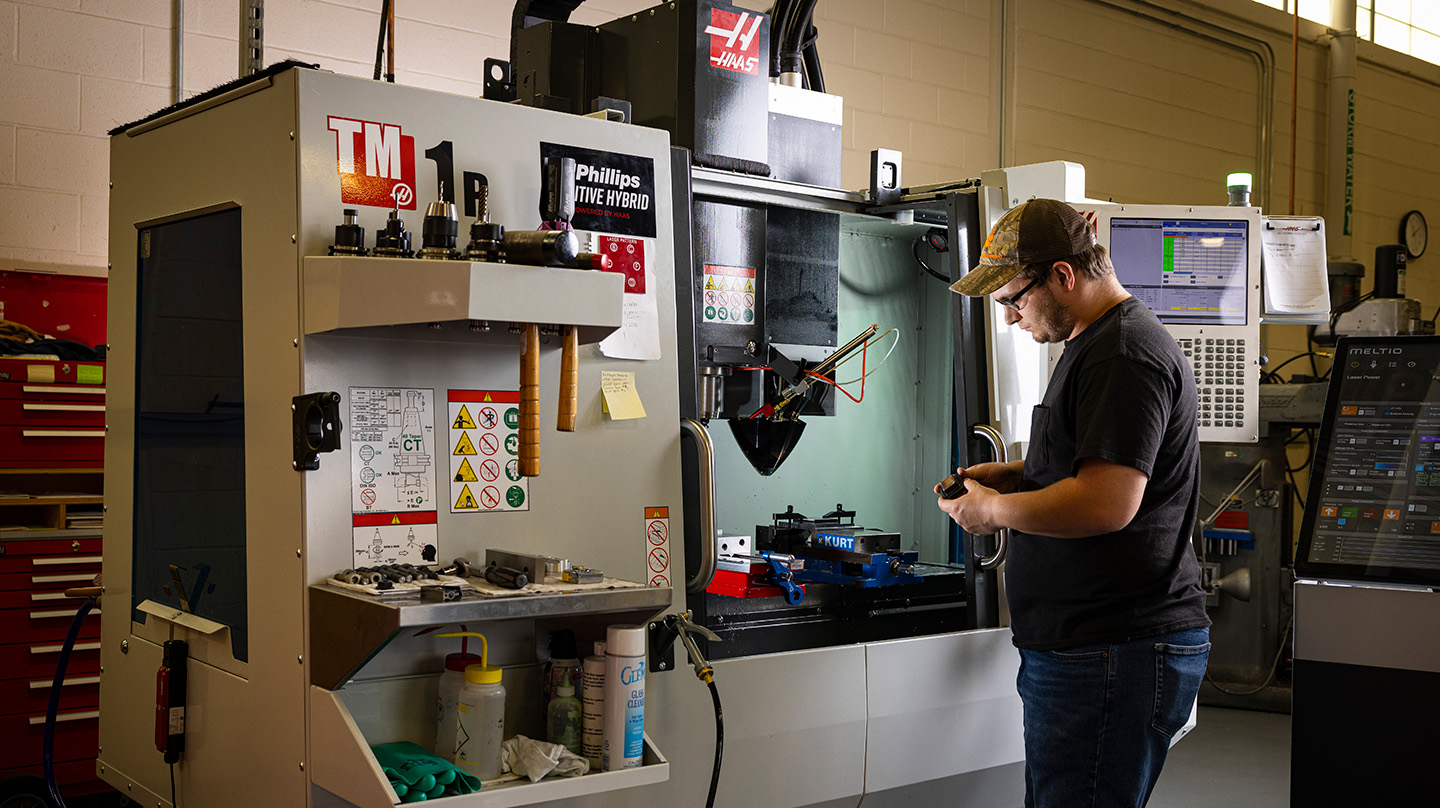News
Johns Hopkins APL and Navy Chart Next Steps to Accelerate 3D-Printing Advancements
Ever made a mistake while sketching or writing in permanent ink and wanted to adjust your work — or scrap the whole thing altogether and start again? If so, you’ve utilized in situ monitoring. It’s a technique used in a variety of industries to monitor the production of something in real time and ensure defect-free items. It’s also become increasingly important in the field of additive manufacturing.
“In traditional manufacturing, such as welding, a real person is operating the equipment, and the welder can adapt as they go,” explained Michael Presley, a manufacturing engineer and project manager at the Johns Hopkins Applied Physics Laboratory (APL) in Laurel, Maryland. “In additive manufacturing, we currently have open-loop systems in which we set parameters and the machine begins manufacturing on its own. The machine can lay miles of welds without ever knowing if something goes wrong. By utilizing in situ monitoring technologies, we can spot those errors earlier if they arise and develop more efficient and accurate processes.”
These monitoring technologies cover a range of sensing modalities: systems ranging from cameras to pyrometers and thermocouples (devices that measure temperatures); spectrometers (that measure wavelengths of light to identify chemicals and materials) tuned across the infrared, visible, ultraviolet and X-ray spectrums; displacement sensors; profilometers (that measure the roughness of a surface’s finish); ultrasonic transducers (that generate or sense energy, often vibration); and even microphones — just to name a few. This wide scope arises from the complexity of the additive manufacturing process. Engineers need systems that concurrently measure the temperature and surface behavior of a molten metal drop moving at meters per second across a build plate, the quality of the bulk material it leaves behind, and the system health of all the lasers, pumps, actuators and feedback controls used by the machine.
Anticipating an Urgent Need
Integrating the wide range of technologies at the heart of in situ monitoring is a large systems-engineering challenge — and one of increasing importance to the Navy’s manufacturing base. While speaking on a panel in London, U.S. Air Forces in Europe Commander Gen. James Hecker said the U.S. stockpile of weapons and munitions is getting “dangerously low.”
And to further support the Department of Defense’s deterrence plans, the Navy plans to invest roughly $132 billion to acquire 12 Columbia-class submarines — the largest and most complex submarines in Navy history. But a recent Government Accountability Office report noted there could be trouble delivering those ships on time.
To address these manufacturing challenges, the Navy is prioritizing the development and fielding of additive manufacturing systems, often called 3D printers, to supplement traditional casting methods and accelerate submarine production. To support this effort, APL hosted a working group in July to discuss the current state of in situ monitoring in additive manufacturing, identify opportunities for advancement, and develop a path forward for future Navy implementation of such technology.
“Collaboration is going to be key in addressing both logistics and sustainment challenges in the current fleet and force and the manufacturing challenges of our future fleet and its weapon systems,” said James Borghardt, APL’s Maritime Expeditionary Logistics program manager. “We’re looking forward to our continued work with the Navy, Department of Defense and partner organizations to keep the field moving forward.”
The event was managed by team members from APL’s Force Projection Sector, Air and Missile Defense Sector, and Research and Exploratory Development Department with support from the Naval Sea Systems Command (NAVSEA 05T) and the Program Executive Office, Strategic Submarines. Among the 32 participating organizations were the Applied Research Laboratory at Penn State University, Virginia’s Commonwealth Center for Advanced Manufacturing, America Makes, the Army Research Laboratory, Naval Air Systems Command, the Office of Naval Research, Oak Ridge National Laboratory, the Defense Logistics Agency, the Nuclear Regulatory Commission and a range of Naval Surface Warfare Centers.
“We went from having a few dozen people in the Navy studying and monitoring additive manufacturing capabilities to now having hundreds,” said Presley. “And we’re trying to bring everyone up to speed and move as fast as possible because these are real, near-term needs. In situ monitoring will play a vital role here because it can speed up and improve inspection of additive manufactured parts.”



